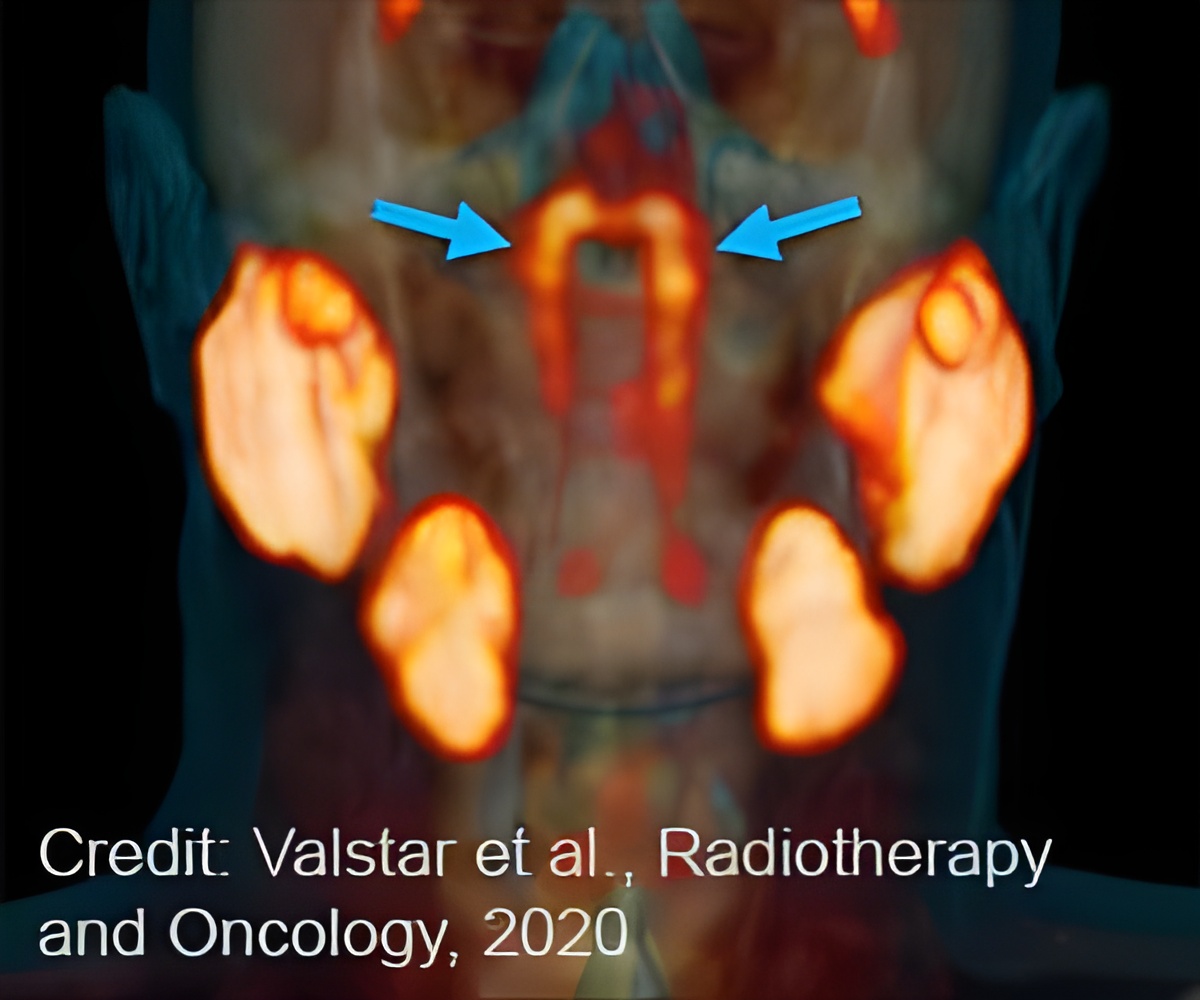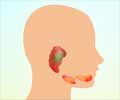A previously unnoticed pair of salivary glands have been discovered in the nasopharynx. These have been named tubarial salivary glands. The discovery could have important implications in treatment of cancer with radiotherapy.

- A pair of previously unnoticed salivary glands have been discovered in the nasopharynx
- These new salivary glands have been named as ‘tubarial salivary glands’
- The glands were visualized using prostate-specific membrane antigen ligands with positron emission tomography/computed tomography (PSMA PET/CT)
- The discovery could have important implications in radiotherapy of head and neck cancer
The study has been published in the reputed medical journal Radiotherapy & Oncology, which is a constituent journal of the European Society for Radiotherapy and Oncology, published from Heidelberg, Germany.
Study Team
The study was led by Dr. Matthijs H. Valstar, who is a surgeon at the Department of Head and Neck Oncology and Surgery, Netherlands Cancer Institute (NCI), Amsterdam, the Netherlands. He is also an adjunct faculty at the Department of Oral and Maxillofacial Surgery, Amsterdam University Medical Center.The senior author of the study was Dr. Wouter V. Vogel, who is a radiation oncologist affiliated to the Departments of Nuclear Medicine and Radiation Oncology at NCI.
How was the Discovery Made?
The new salivary glands were discovered accidentally, when the scientists were looking for tumor growths using a new type of imaging technology. They further verified their initial observations by scanning the head and neck region of another 100 patients, undergoing treatment for prostate cancer. They then went on to dissecttwo cadavers - one male and one femaleand both contained a pair of these salivary glands.“We thought it wasn’t possible to discover this in 2020”says Valstar. “It’s important that it’s replicated and it should be done with different series of patients. It’s important to have confirmation of new medical findings.”
Where are the Glands Anatomically Located?
The newly discovered glands are located around a cartilage called torus tubarius cartilage adjacent to the nasopharynx. Hence, these glands have been named tubarial salivary glands, which are roughly 3.9 cm in length.It is believed that the primary function of these glands is to lubricate and moisten the upper throat, behind the nose and oral cavity.Currently, the following three salivary glands are known:
- Sublingual Salivary Glands: These are the smallest of the three salivary glands and are located under the floor of the mouth and below either side of the tongue
- Submandibular Salivary Glands: These are intermediate in size (about the size of a walnut) and are located below the jaw
- Parotid Salivary Glands: These are the largest of the three salivary glands and are located just in front of each ear
How were the Glands Detected?
These newly discovered salivary glands cannot be visualized by means of conventional medical imaging techniques, such as ultrasonography (USG), computed tomography (CT) or magnetic resonance imaging (MRI). These glands were discovered by the scientists while they were studying prostate cancer cells using a new state-of-the-art imaging technology, known as prostate-specific membrane antigen ligands with positron emission tomography/computed tomography (PSMA PET/CT). The tubarial salivary glands were distinctly visible using this new imaging modality.What are the Implications of the Discovery?
Radiotherapy of head and neck region can generally damage salivary glands and this leads to dry mouth and trouble swallowing, speaking and eating. The researchers indicate that this discovery could have important implications in clinical oncology, with particular reference to head and neck cancer, as well as cancer of the throat or tongue. Importantly, sparing these glands from radiation exposure during radiotherapy could improve the quality of life of the patients as it would not produce dryness of the throat.“For most patients, it should technically be possible to avoid delivering radiation to this newly discovered location of the salivary gland system in the same way we try to spare known glands,” Vogel said.
“Our next step is to find out how we can best spare these new glands and in which patients. If we can do this, patients may experience less side effects which will benefit their overall quality of life after treatment.”
In summary this discovery clearly shows that despite all the advancements there is still much to learn about the human body. Importantly, this discovery has been made possible by newly developed imaging technologies, coupled with the expertise of the scientists to interpret the highly complex visual data.
And in the end it may be said that many great scientific discoveries have come as a surprise - aschance findings. As the legendary French microbiologist, Louis Pasteur once said:“Chance favors the prepared mind.”
Reference:
- The tubarial salivary glands: A potential new organ at risk for radiotherapy - (https://www.thegreenjournal.com/article/S0167-8140(20)30809-4/fulltext#%20)
Source-Medindia














